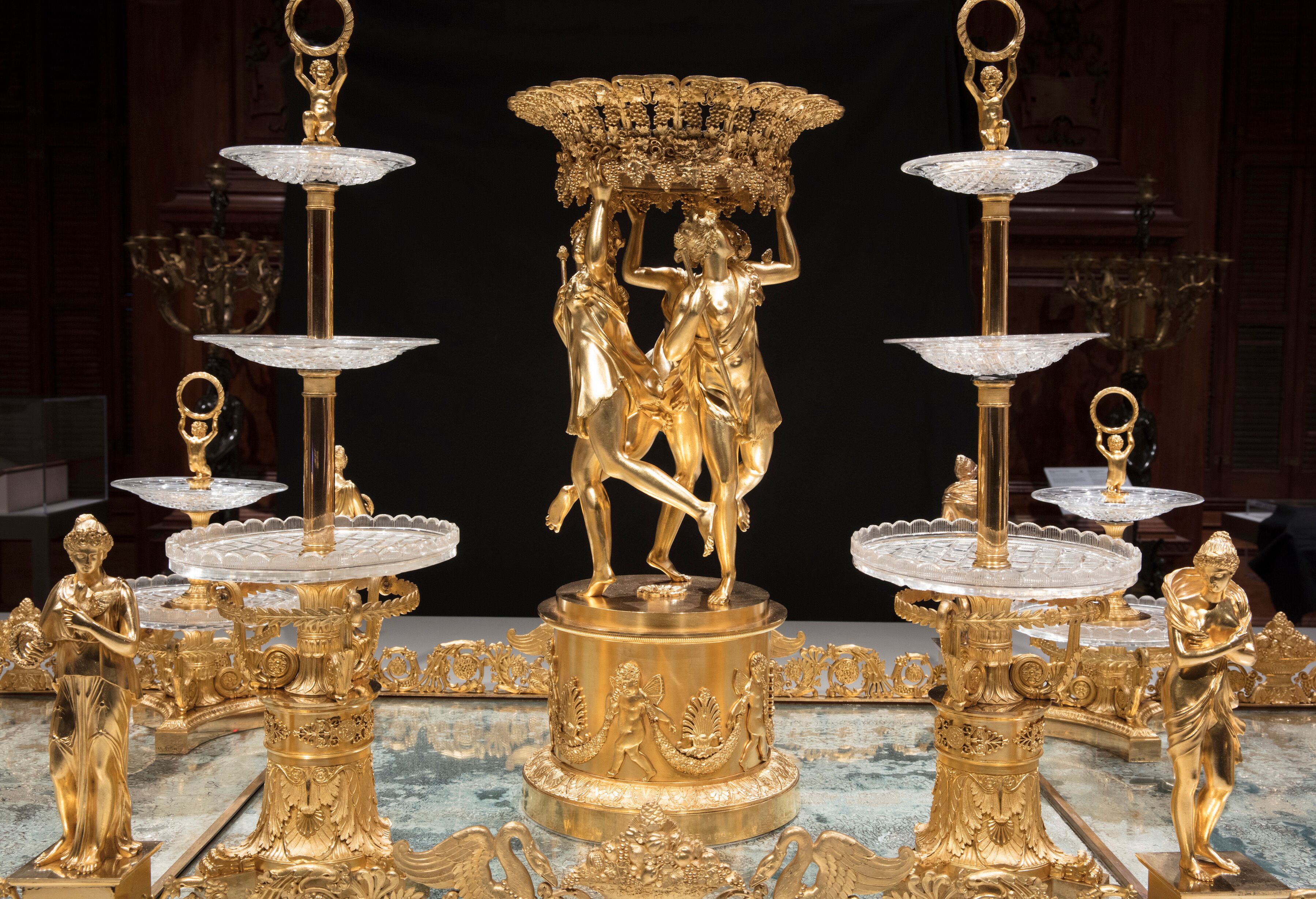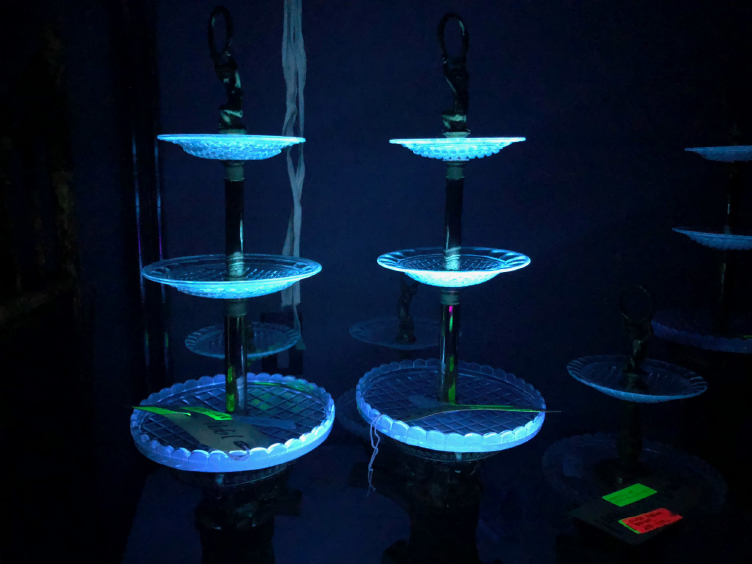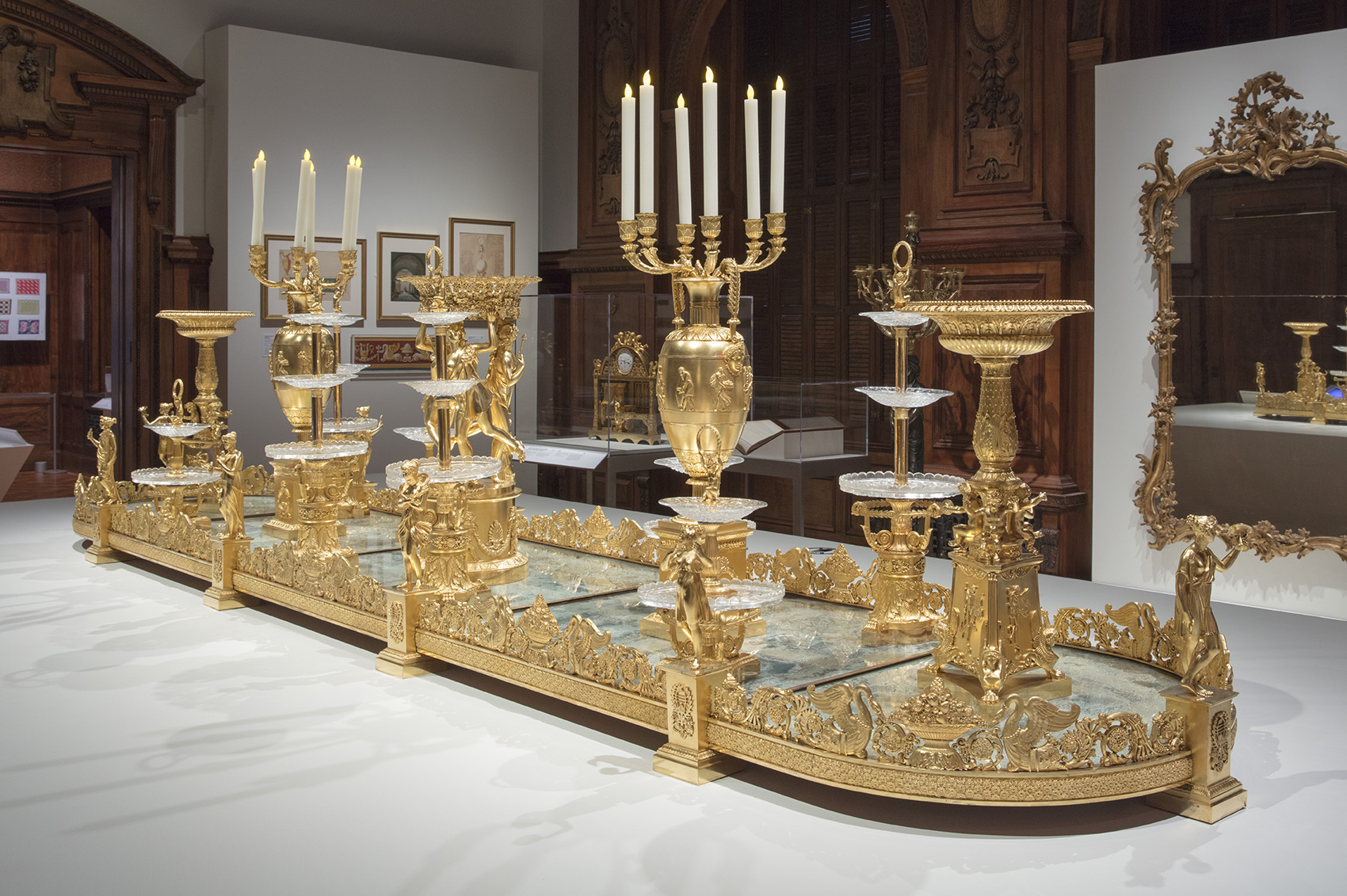Written by Sarah Barack, Head of Conservation, Senior Objects Conservator
Thanks to a generous gift from the Smithsonian Women’s Committee, Cooper Hewitt’s spectacular surtout de table centerpiece was the focus of a recent technical study and conservation treatment by the museum’s conservation department. In this series of posts, conservators will be sharing the results of the technical study, as well as more information on the making of the piece and its conservation.
Transparent and colorless, the glass dishes mounted along the tiered servers were meant to hold fruit and other items, allowing the delectable treats to seemingly float above the glittering surtout de table. And yet the decorative patterns cut into the bowls carry forward the play of light that bounces across the surtout’s gilded surfaces and reflects off the mirrors below. This refraction, or bending, of light is enhanced by the composition of the glass itself, which included lead. Leaded glass has a higher refractive index (RI) than glass without lead (the refractive index indicates how fast light travels through a substance, when compared to how fast it travels in a vacuum). Leaded glass also disperses light as it passes through the medium, which means that the light is separated into the various wavelengths that comprise white light. Altogether, you notice a greater sparkle or brilliance when looking at leaded glass, and glass workers took full advantage of these properties by cutting the material to create patterns that maximize these effects.

Detail of the surtout de table, featuring the cut-glass dishes and Three Graces centerpiece.
Leaded glass is often associated with the English glassmaker (or glass factory owner) George Ravenscroft, as he was awarded a patent to produce leaded glass in England in 1674. Eventually companies such as Waterford in Ireland became known for their exquisite cut crystal products.
Conservators must understand the materials—and manufacture—of objects they hope to preserve through study and treatment. Glass composition can be determined through sampling (usually the removal of a minute amount of original material) and conducting analysis on, for instance, a Scanning Electron Microscope (SEM) with Energy Dispersive Spectroscopy (EDS). But a low-cost technology and inexpensive way to quickly determine whether or not glass has a significant lead content is to use ultra-violet (UV) light. Leaded glass will often fluoresce, or produce, a distinct blue-ish color when illuminated under UV light.

The leaded glass of the surtout de table fluorescing blue under UV light.
Three of the glass dishes associated with the surtout were damaged at some point in their history, and it was necessary to stabilize this damage through conservation treatment. As leaded glass has a high RI, conservators must also make sure that whatever adhesive will be used to repair the glass has a similar RI. If the RI of the adhesive varies greatly from the original glass, cracks will remain visible (even if the adhesive is helping to make sure that the damage is stable). The closer the RI of two material becomes, the less visible the difference between them. Therefore, adhesive used to repair broken glass will be almost invisible if the RI is appropriate. We often use a two-part colorless epoxy resin that was formulated for glass conservation—meaning it has a useful RI and presents very good aging properties. Any glues that yellow within 10 to 15 years or less are avoided, especially when treating a colorless leaded glass object.
Altogether, the glass dishes help enliven the appearance of the surtout, and show us how elaborate and sumptuous the entire ensemble must have looked.

Cooper Hewitt’s surtout de table, on display in the exhibition Tablescapes: Designs for Dining (on view October 5, 2018–April 14, 2019).